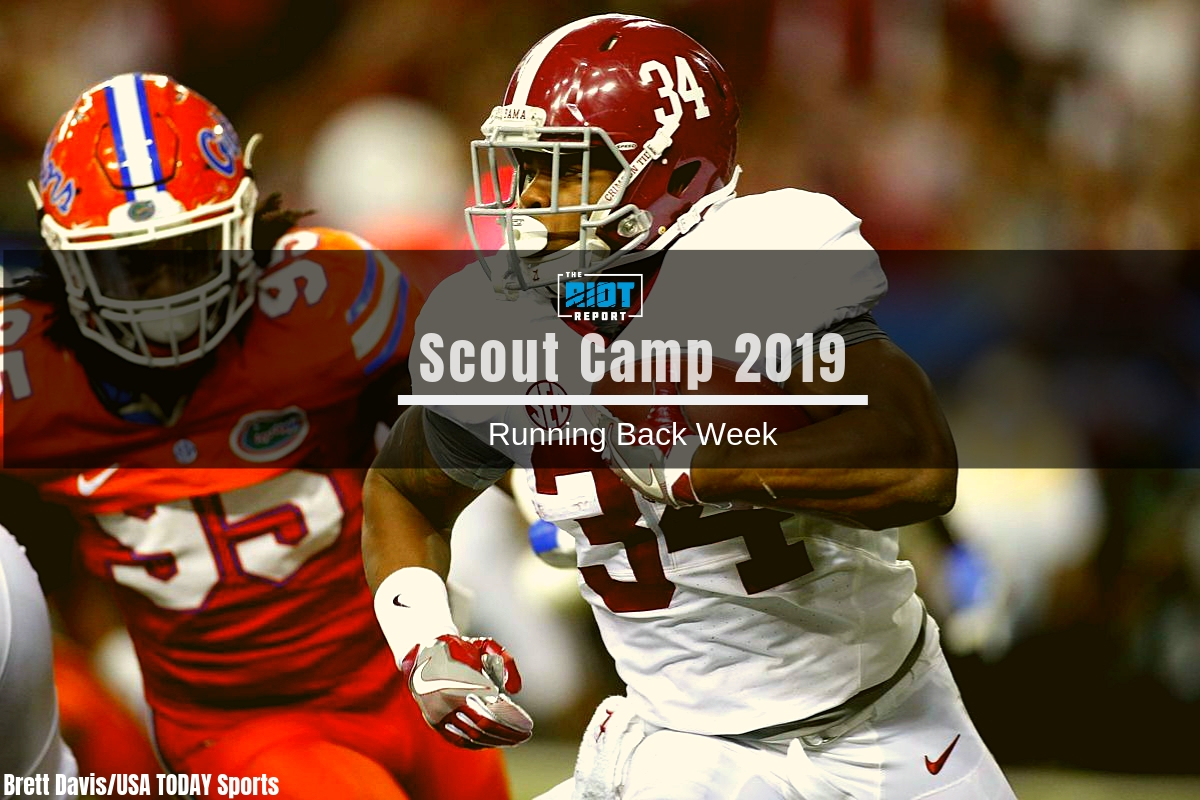Beating Tacklers
As mentioned earlier, Harris’s main value in terms of avoiding tackles is by effectively pinballing off those who aren’t able to get low and wrap up:
In this regard, he isn’t some downhill thumper who spends his time trucking safeties, but what he does do well is to add yards after contact. The primary way he, and most running backs, was able to do this was by continuing to drive his legs through contact:
But he also packs enough power to get the upper hand at the contact point:
And his balance once again comes in handy, allowing him to stay on his feet and work his body for extra yardage:
And while he is far from the next Barry Sanders, he does have some ability to make a man miss in space:
This is probably the weakest part of his game as a runner – while his burst and balance did allow him to break a far number of tackles, defenders who are able to line him up and tackle well aren’t likely to find him a foot from where they expect to be or themselves lying on their backs, so while this does limit the number of defense-breaking plays he is able to make, he consistently adds yardage to what is blocked for him, and when defenders aren’t as disciplined as they need to be he shows the ability to make them pay for it.
The Passing Game
As you are probably well aware, Harris wasn’t the only good running back at Alabama last year, and with Josh Jacobs being arguably the best receiving back in this draft class as well as a pretty solid blocker, Alabama didn’t use Harris a huge amount in this regard. As a pass protector, Harris does show willingness, but his technique is almost completely absent and any team that wants to use him in this regard will have to coach him to do so:
This certainly isn’t a positive, but there are very few running backs in this draft class who have any real experience in pass protection, so this is also not the biggest negative either. As a receiver, Harris shows natural hands, but as a route runner he really wasn’t asked to do very much:
At the combine, he did flash a decent ability to make cuts on angle routes and the like – it is certainly not beyond the realm of possibility that he could improve further as a route runner, but this just wasn’t something he was asked to do.
We are still far enough away from the draft that a consensus is yet to emerge with regards to where a number of players are likely to be drafted, with Harris being one of these players. Depending who you ask, he could go anywhere from the 40th to 140th pick, and while both are probably unlikely, he could fall to the Panthers in the third round – where his value would be hard to ignore.
It is still unclear if the Panthers are looking for a true like-for-like backup for McCaffrey or whether they want somebody whose style complements his. Harris certainly isn’t the former, but if they want to find an interior rusher to pair with McCaffrey’s more outside running style and receiving ability, Harris would make a lot of sense.
Grade: Late 1st Round
Best-Case NFL Comparison: Devonta Freeman



